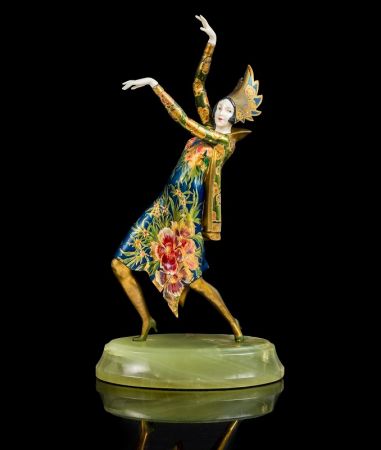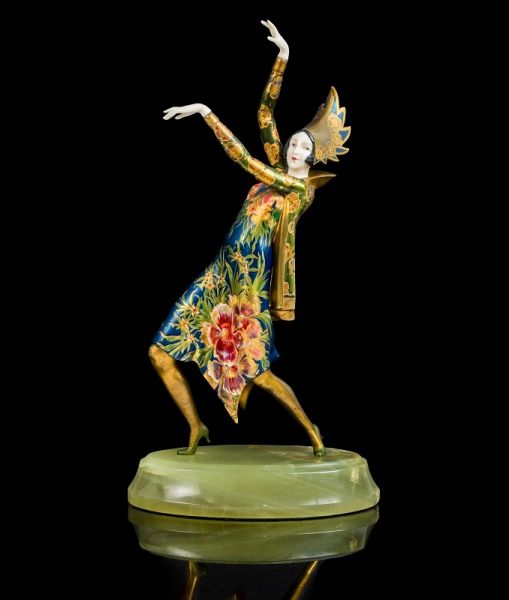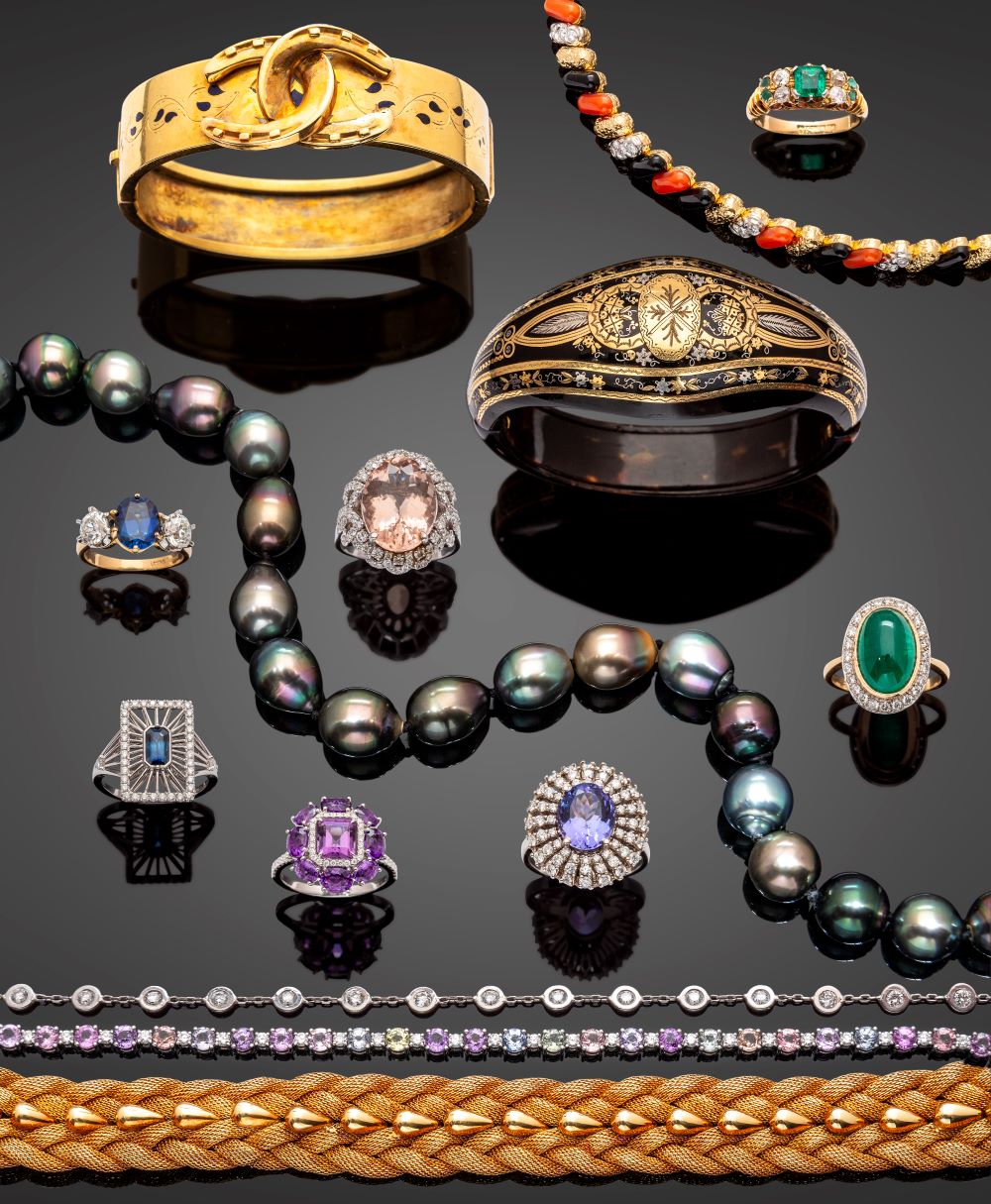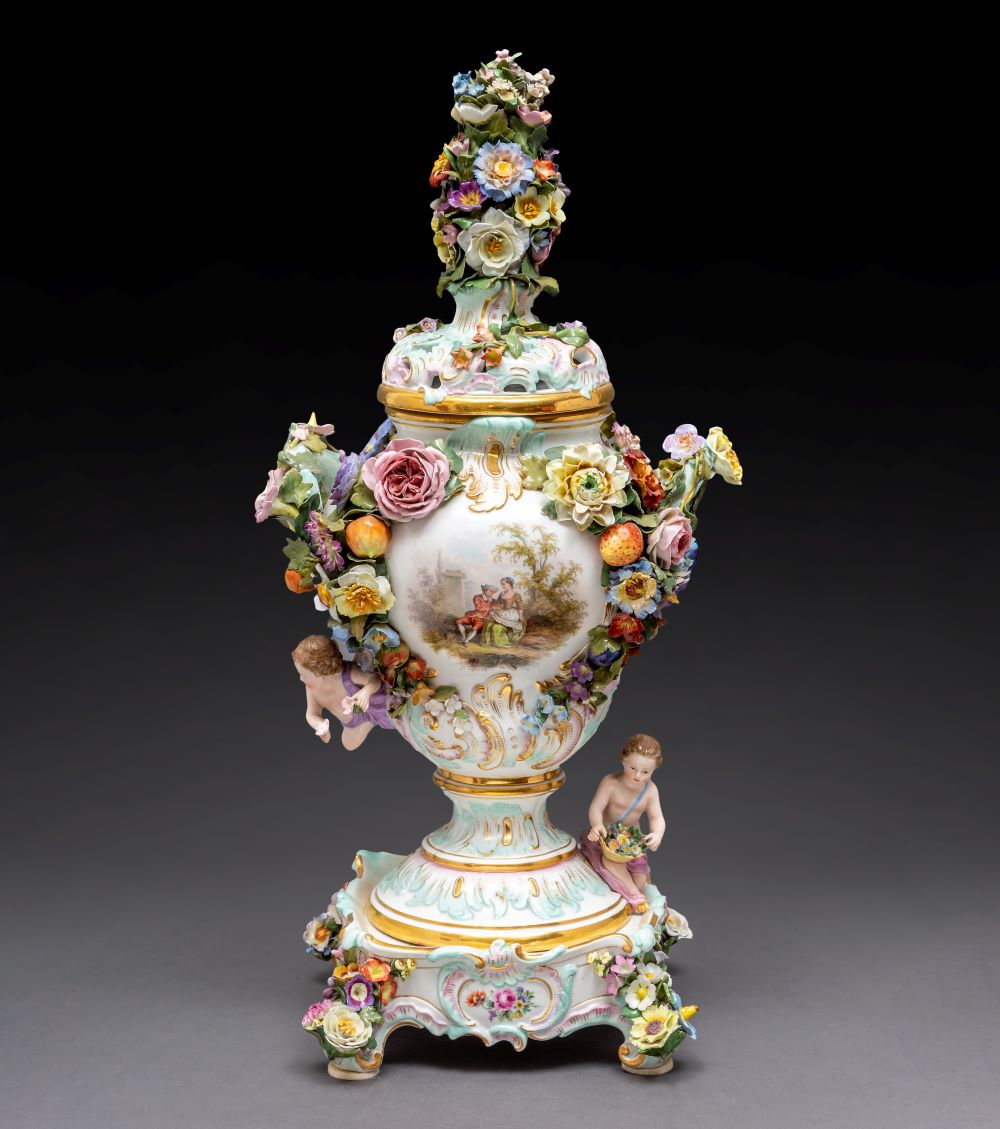The colourful world of Gerda Iro 'Gerdago' (1906-2004)
When we think of exquisite bronze figures of the 1920s and 1930s, the great names of Chiparus, Preiss, Lorenzl, come to mind. But who was 'Gerdago'?
'Gerdago' was the pseudonym of Viennese born Gerda Gottstein. She received art training in both Berlin and Paris in the late 1920s and in the ensuing years designed costumes for theatre and revue performances where her work attracted the attention of Austrian film maker Willi Forst.
He hired Gerda as costume designer for his 1934 biopic about composer Franz Schubert, so launching a career that was to span fifty years and over eighty films.
She survived the German occupation of Austria, probably due to her marriage to a non-Jew and a change of name. Resuming her career after the war she developed a reputation for historical costuming. Lush ball gowns, crinolines and tea dresses were her forte. The 1950s trilogy, 'Sissi' about the life of the Empress, Elizabeth of Austria, and starring the legendary actress Romy Schneider, showcased Gerda's spectacular costuming in ravishing colour.
Gerda's arresting stylised bronzes however, present quite a departure from the frothiness of historical romances, owing more perhaps to her earlier revue and theatre work. The Arthur Rubinstein foundry in Vienna translated her theatrical designs into three dimensional form, and two of the pieces currently offered by Philips bear the foundry monogram, AR, as well as Gerda's alias, Gerdago.
Her command of pattern, audacity of design and particularly her use of vibrant colour distinguish Gerdago from her contemporaries. Some works are strikingly modern, futuristic even, such as the dancer in a cat suit, LOT 115, or seemingly inspired by the Ballets Russes, LOT 100.







